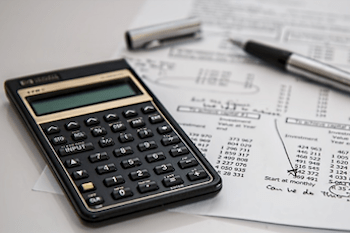Know your numbers for business success
 The five financial figures every business owner needs to know
The five financial figures every business owner needs to know
“Numbers are the highest degree of knowledge. It is knowledge itself,” said Plato – and who are we to argue?
We’re not here to comment on Plato’s theories on realism and idealism, but he sure hit the nail on the head with numbers. In business, numbers ARE knowledge. Knowing your numbers is the only real way to know how your business is performing. Even if your customers are happy and the cash register is ringing, your business could still be struggling – and if you haven’t crunched the numbers, you may not even know.
Numbers can also help predict the future. We’re not talking about picking the Lotto numbers or the winning horse, we’re talking about trends. Looking a single number tells you something about a single point in time but analysing a series of numbers tells a story – what has happened in the past and what is likely to happen in the future. In business, this is important as it helps business owners to make informed decisions and position their business well for the whatever the future holds.
So, here are the five numbers every business owner needs to know (and track):
Cash flow
Cash flow is the lifeblood of your business. It is the difference between the money coming into and the money going out. If your cash inflow exceeds your outflow, then you are making enough money to cover your costs. Some of the numbers that need to be considered when calculating your cash flow include:
- operating income – sales of your goods or services
- accounts receivable – money owed to you
- accounts payable – money you owe other people, such as rent and suppliers
- accrued expenses – money you owe for a different accounting period, such as wages
- depreciation on equipment – the decrease in an asset’s value.
Cash flow forecasting is a great way to understand where your working capital is at any given time. It is a projection of the flow of cash over a period of time, usually on a monthly basis over a 12-month period. It is a summary of the cash banked, the payments made, and the resultant effect on your bank balance. We recommend performing a cash flow forecast annually as a matter of course.
Sales
The main objective of every business is to generate sales (or revenue). As well as knowing how sales are going in the present, tracking your history of sales will help you identify any influencing factors.
Comparisons are also useful. For example, which products or services do you sell more of, at what price point and at what time of year? Which salesperson sells more and why? And which group of customers buy more?
Keeping a close eye on sales means you will be alerted quickly when there is a change, and this means you will be in a better position to act. If sales are down, you can identify why, likewise if sales are up, you can figure out what’s working and leverage it.
Profit
Profit is the end goal but there are a variety of ways to measure it. For example:
- gross profit or the contribution to profit of different services or product lines
- gross profit percentage for the current month and year to date, as well as a comparison with previous periods
- net profitability each month
- actual results compared with a budget of profit and loss
- rolling forecast of actual results, compared with future projections
- 'break-even' point - how much you need to sell to cover costs and overheads without making a loss or profit.
Gross Margin
As an equation, gross margin is calculated by subtracting the cost of a product or service from the selling price, and it is usually expressed as a percentage.
Knowing your gross margin for every service or product you offer helps to determine optimal pricing. If your gross margin low, in the longer term you may not be able to cover all your expenses, which means you are not charging enough.
Debt to asset ratio
Calculating your debt to asset ratio is one way to assess the financial risk of your business. It indicates the proportion of your business’s assets that are financed with debt, as opposed to equity. A ratio greater than 1 indicates more assets being funded with debt, while a low ratio indicates more assets being funded from equity.
Debt to asset ratio = total liabilities ÷ total assets
Getting to grips with your debt to asset ratio is particularly important if you are looking for finance and when assessing the value of your business, for example if you are preparing for sale.
Share this article:
- Business finance - borrowing the money
- Reducing business overhead costs
- End of financial year checklist
- Making the most of small business downtime
- Using the bank to arrange business finance
- Cash flow for small business owners
- Know your numbers for business success
- Spring cleaning your business
- Financing a franchise, what the bank wants
- Financial tips for small business owners
- 3 tax considerations when purchasing a business
- Cashflow forecasts and liquidity
- Left Brain Right Brain, Financial Performance
- Using accounts payable to your advantage
- Cash flow financing or factoring finance
- Cloud commerce for business
- Avoid cyber attacks on your business
